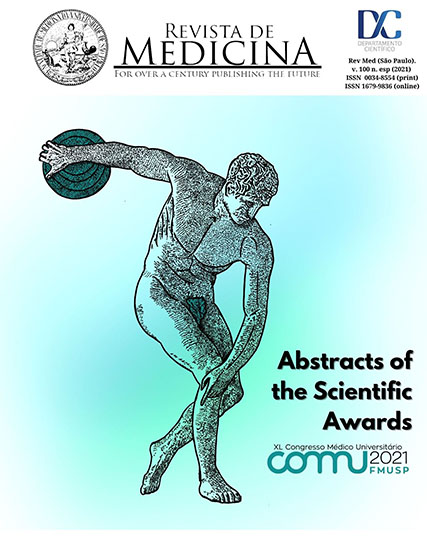Modulation of immune checkpoints on linage HL-60 of acute myeloid leukemia treated with BRD4 inhibitor and mTOR pathway inhibitor
DOI:
https://doi.org/10.11606/issn.1679-9836.v100iesp16-16Palavras-chave:
HL-60, Immune checkpoint, JQ1, RapamycinResumo
Introduction: Acute myeloid leukemia (AML) is an aggressive hematological cancer, with poor prognosis for patients, which does not have a particularly good response to chemotherapy-standard treatment. Therefore, new therapies are needed to this disease. When the BRD4 inhibitors first appeared, they seemed to be really promisors, but soon was demonstrated that some patients had resistance to the treatment, as well as they could acquire resistance. Based on previous experiments, our research group has observed that the combined treatment of BRD4 inhibitors with mTOR pathway inhibitors is able to break that resistance. Besides, immune checkpoints have gained a lot of importance on the past years, so we aimed to investigate if this combined treatment can modulate the expression of checkpoints on AML cells. Thus, we expect to contribute to new therapeutic alternatives to AML, especially because immune checkpoint blockades (ICB) have advanced a lot and keep showing good results on several cancers, including hematological ones. Objectives: Investigate how the combine use of BRD4 inhibitors and mTOR pathway inhibitors can modulate immune checkpoint expression in AML cells. Methodology: We use the cell linage HL-60, cultured at RPMI 1640, supplemented with 10% fetal bovine serum, and maintained at 37oC and 5% of CO2. For the treatment, we used JQ1 (200nM) as BRD4 inhibitor and rapamycin (50nM) as mTOR pathway inhibitor, some populations were treated with JQ1 and rapamycin, this treatment was named Combo. To evaluate gene expression, we used qPCR reaction and to evaluate protein expression, we used flow cytometry. Results: We have done qPCR with cDNA from samples treated with DMSO (vehicle), JQ1, rapamycin and combo, each treatment in quadruplicate. This experiment showed a tendency of cells treated with JQ1 and combo to decrease expression of PD-L1 (means of the expression of PD-L1: DMSO=1.01; JQ1=0.96; Rapamycin=1.56; Combo=0.72). Also demonstrated a tendency of cells treated with JQ1 and combo to decrease expression of HVEM (means of the expression of HVEM: DMSO= 1.13; JQ1=0.55; Rapamycin=2.11; Combo=0.91). Besides, qPCR showed us the absence of expression of PD-L2 on this linage. The tendency on the decline of PD-L1 expression was confirmed by flow cytometry (mean percentage of positive events for anti-PD-L1: DMSO=4.39; JQ1=1.16; Rapamycin=1.42; Combo=0.947). Flow cytometry confirmed the non-expression of PD-L2 by HL-60. Discussion and conclusions: The decrease of PD-L1 expression, confirmed by flow cytometry, elucidate the possibility of modulating the expression of this immune checkpoint on LMA. This is promisor, once it makes the tumor more susceptible to patient’s immune system defenses, probably increasing the response to other treatments. Found out this linage does not have expression of PD-L2 is also a major information, because it excludes the possibility of ICB to this immune checkpoint. Further evaluations are still needed on other linages of AML and on other checkpoints, but this path seems to be relevant on the defeat of cancer.
Downloads
Downloads
Publicado
Edição
Seção
Licença
Copyright (c) 2021 Ana Carolina Costanti do Nascimento, Elayne Bragança Jardim, Letícia Borges da Silva Heinen, Mariane Tami Amano

Este trabalho está licenciado sob uma licença Creative Commons Attribution-ShareAlike 4.0 International License.




